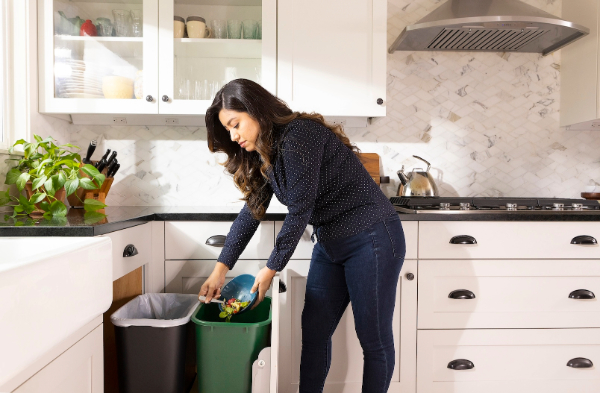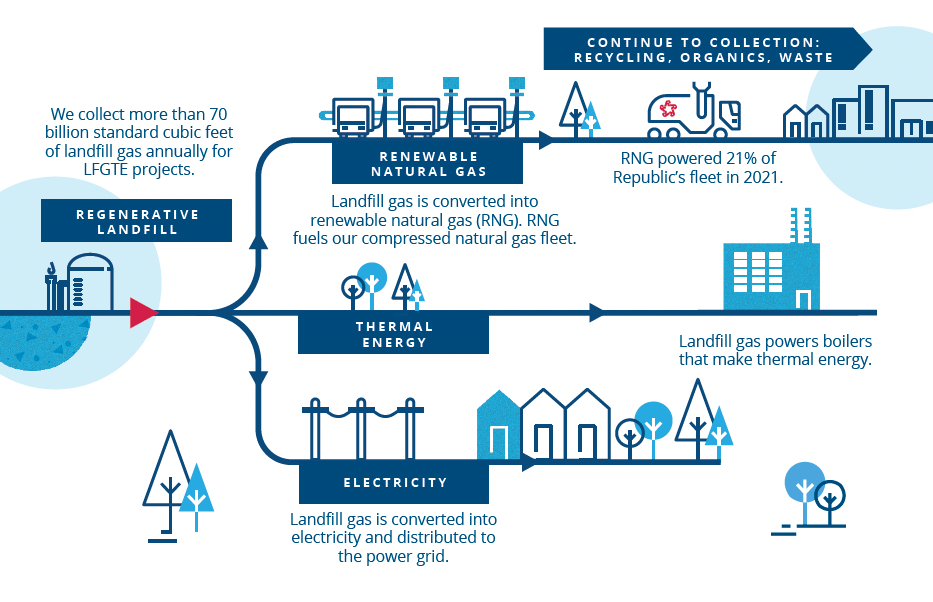
Turn Trash into Treasure with These Simple Composting Tips
Curious about composting? Learn what exactly compost is, how to use it and some simple steps to get started.Byline: BTB Editor
August 21, 2024 / Time to read: 5 minIt’s easy to think plastics and other non-biodegradable materials cause all the trouble when it comes to waste management, but organic waste can harm the environment, too — especially when it’s discarded at scale. According to the Environmental Protection Agency, food is the most common material sent to U.S. landfills, making up
When eggshells, rotten fruits and veggies and forgotten leftovers from the back of the fridge make their way to landfills, they break down and generate methane. Also known as CH4 methane traps heat and, over time, raises Earth’s surface temperature. All that food, along with other organic materials like yard trimmings and paper, accounts for more than half of landfill methane emissions.
While food waste — and the greenhouse gas — it produces is a major bummer, we’ve got great news: It’s pretty easy to keep a significant amount of food out of your trash.
Keep reading to learn more about our favorite at-home composting tips. But first, let’s break down food breakdown a little further.
What Exactly Is Compost?
Compost is the material created from the aerobic (meaning oxygen is required),
Compost can heat up to
What Are the Benefits of Composting?
When you
- Contributing to a circular economy
Giving food and yard waste another life is just one easy way tocontribute to a circular economy , meaning you help keep the materials and products you use in circulation for as long as possible. - Reducing greenhouse gas emissions
By making better use of your food waste, you can help reduce the methane production that results from sending organic matter to landfills. - Helping plants grow
Compost is lovingly referred to as “black gold” for a reason. It contains thenitrogen, phosphorus and potassium plants need to grow and thrive. So rather than resort to potentially harmful fertilizers, you can provide your garden with nutrients in an easy, cost-effective and chemical-free way. - Conserving water
Compost helps soil retain water, meaning you won’t have to water your plants as much. - Preventing soil erosion
Due in part to its ability to conserve water, compost can help soil stay put. - Using fewer trash bags
When you divert food waste from your trash can — even just a little a day — you’ll use fewer trash bags over time.
Composting Tips to Try at Home
Before you start stashing your scraps for greener pastures, take a look at these helpful starting points.
Choose your method
There are several ways to compost at home, including:
- Indoor bin
You can make your own bin, likethis one , or purchase one for your countertop or floor. As one of the most low-maintenance methods, indoor bins won’t require you to head outside in the cold to add scraps and mix. With that said, indoor bins tend to be much smaller than outdoor ones. - Outdoor stationary or tumbling barrel
If you’re ready to compost with gusto, you may want to opt for an outdoor composting setup. You can choose from a stationary bin or a tumbling one, which you’ll turn once or twice with a hand crank each day. Typically, outdoor barrels can handle a greater volume of organic waste. - Worm composter
For households who don’t generate yard waste (more on this below) you can have worms do the work for you. Worm composting, also known as vermicomposting, creates compost at high-speed since the worms can processhalf a pound of food scraps each day.
There are other options you can explore, including an outdoor compost pile and systems that can handle animal products, but the methods above are generally the most beginner-friendly.
Don’t add everything
Certain organic materials should stay out of your at-home compost, either because they can attract animals or they won’t reach a high enough temperature to fully break down. These items include:
- Fats, oils and grease
- Meat, fish and bones
- Dairy products
- Cooked food
- Produce stickers
- Bags and dishware labeled “compostable”
Mix your greens and browns
This tip is just a tad more technical, but we promise it’s still simple. For a well-balanced compost, you need a
Use your senses
To put it simply,
Add some air to the equation
You’ll want to mix or turn your compost regularly. Doing so will introduce the oxygen microorganisms need in order to breathe. The result: More mixing means faster decomposition.
Decide if you want to keep (and use) your compost
You can add your compost to potting soil, sprinkle it around existing flowers and vegetable plants, add it to soil around fruit trees and use it as mulch.
Or maybe you don’t have a sprawling vegetable garden or loads of landscaping in need of compost. In that case, you may be able to schedule food scrap pickup for industrial composting. Check with your local provider to learn more about the organic waste recycling services available near you.
Organics Recycling Gains Momentum
Both because consumers want to be more sustainable and legislation is helping
We’re committed to it too! For starters, we’ve expanded our organics collection and infrastructure to help keep food waste out of the waste stream. And at our 22 organics facilities around the country,
Once we collect all that biogas, which can be used as electricity, renewable natural gas (RNG) for use as a low-carbon fuel and thermal energy for heating or to power industrial boilers, we turn it into clean energy to benefit local communities. By processing nearly 28,000 tons of organic at our anaerobic digestion facility in Northern California last year, for instance, we produced enough biogas to power the facility.
With our 68 landfill gas-to-energy projects — and more than 50 additional RNG projects expected to launch by 2029 — we’re well on our way to reaching our goal of beneficially reusing 50% more biogas by 2030.

